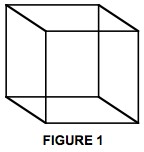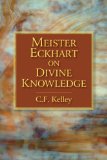Reason and Religion: Irremediably Incompatible Bedfellows?
Page 5 of 9 pages « First < 3 4 5 6 7 > Last » - Full Article
An unlikely alternative?
Yet, we might also say that there is really no problem at all. If on a dark summer night we take a long curled object to be a snake when actually it is our garden hose, we have no more than error and false appearance. We saw something as a snake.
But it was no snake; it was a garden hose. Both the ‘irreal’ snake and the ‘real’ hose mutually arose from ‘emptiness’: one was considered ‘real’ and the other was not. So the contradiction between them is no more than appearance, for there is no snake. We saw a snake but there was no snake. We didn’t see a hose but there was a hose. So there was what we saw not and there was not what we saw. Now, in order to see what there was, it would have been imperative that we see the hose as a hose. On so doing, we would have seen a hose, and that’s the end of the story, we might suppose.
But that’s not the end of the story. If we saw hose and hose is what there was, then we would have been correct. There was a hose. But there was also an undefined and indeterminate number of other things we might have seen and that might have been but we did not see them and they were not. Instead of a hose there might have actually been a snake. Or there might have been a long curled strip of paper or a piece of thick rope. By a long stretch of the imagination, there might have been a carefully preserved tape worm recently extracted from its deceased host, or whatever else that might have been conjured up. But it was a hose. Upon becoming a hose, the image canceled out all the other possibilities without any of them having happened to pop up so we could take a gander at them. But, alas, we are left with appearances. To the person engaged in everyday real life experiences, the appearances, Maya, are ‘real’; to the logician they are the product of a maniacal stream of sensations; yet, by logical principles, they should be knowable, and in principle they are; to the adherent of the Mādhyamika, appearances are ‘irreal’, and the only reality we are left with is the nonreality of ‘emptiness’.
At the same time, with respect to the Mādhyamika, and contrary to the opinion of some Buddhist scholars, we have what at least at the outset appears to be a most violent rape of the Non-Contradiction Principle. I have the ‘Tetralemma’ in mind, once again, for which Nāgārjuna is most notable. The Tetralemma consists of a tetrad of propositions set out much as one would expect to find in Western logic. But the similarity ends immediately after the first proposition, for the Tetralemma will have no truck with clean-cut bivalent categories of Western logical sort. In replay, it goes like this:
(1) A exists.
(2) A does not exist.
(3) A both exists and it does not exist.
(4) A neither exists nor does it not exist.
We should have no problem with (1) and (2), that is, if they are not taken in simultaneity but within different timespace contexts. In other words A can exist, with its own particular Identity, within timespace context x, and within another timespace context y, its existence, and hence its Identity, has transmuted into something else. That won’t give orthodox, straight-laced logicians much comfort, but it can accommodate Aristotelian thinking, and it allows for change. In contrast, (3) obviously gives a stiff uppercut to the Principle of Non-Contradiction, that is, assuming that A exists and it does not exist within the same timespace context, and (4) does the same with the Principle of Excluded-Middle, for traditional bivalent logic will have nothing to do with more than a dyad of values (Conze 1970: 219, Murti 1955: 146-48). However, since common sense as well as reason tell us that (3) simply cannot be the case in any coherent world, the implications of (4) are not so ghastly. In fact, even such mainstream North American philosophers of mathematics and logic as Quine (1953) and Hilary Putnam (1983) speculate on the possibility of conducting our affairs without the need of having to pay strict homage to the Excluded-Middle.
In a manner of speaking the Excluded-Middle reformulated as the Included-Middle, of three-values and more, gives rise to the possibility of change over time. According to the Included-Middle principle, something must be either ‘green’ or ‘not-green’. If it is ‘green’, it is ‘green’ and that’s that. If it is ‘not-green’ then it cannot be ‘green’, but at some other time and place and according to the mind of a particular beholder, it might possibly be some other color, say ‘yellow’. O. K., so it’s ‘yellow’. But perhaps it could have been something other than ‘yellow’ at some other time and still be ‘not-green’, say, ‘blue’ or ‘brown’. A leaf is ‘green’ in the summertime, ‘yellow’ during a short period of time in the fall, and ‘brown’ thereafter and just before it falls to the ground. We would ordinarily consider the possibility of the leaf turning ‘blue’ out of the question, or at least remote, though not an absolute impossibility, given some strange setting or some zany perceiver. So over time it has manifested several of its possible attributes. All this, and the Excluded-Middle remains pretty much intact, that is, if consideration remains atemporal.
However, one might wish to assume that to say the leaves of a certain tree are ‘Either green or not-green’ should imply the idea of double negation, ‘Not-not-green implies green’. In this sense, if a leaf is ‘not-not-green’, then it must be ‘green’, and not ‘yellow’ or ‘brown’ or some other color from the spectrum that could possibly fit leaves at some particular time of the year. The Principle of Excluded-Middle has not in this manner been salvaged so much as it has been expanded: it has given way to the Principle of Included-Middle. This is easy enough. It is so much as to say that the leaf is ‘Either not-not-green or not-green’. However, one may then expand the meaning of the equation by assuming that the sentence ‘Either not-not-green or not-green’ gives us a choice between green, and what is neither green (not-not-green) nor not-green, but some other color unbecoming of proper leaf behavior. This other color might be what, at some point in time as a result of some new experience on the part of an interested—or perhaps confused—onlooker receiving strange sensations, might happen to emerge from the gap between green and not-green leaves, namely, blue, pink, mauve, or some other possible color. When taking process and the emergence within time and from the perspective of some sentient subject into consideration, perhaps the Excluded-Middle is not as iron-clad as we would like it.

In contrast, Western logic usually contends that the strictly defined Aristotelian Principle of Non-Contradiction is an unvarying law of all valid thought. The difficulty is not, however, in knowing how to get along without Aristotle’s ban against any and all contradictions. The difficulty rests in comprehending the function of negation, of the use of ‘not’. We can say of something that ‘It is A and it is Not-A’, but on so doing we eventually come to understand that when saying ‘A’, what we mean is the we aren’t saying ‘Not-A’, for we are denying it while we assert ‘A’. Moreover, when asserting ‘Not-A’, we are by the very nature of our assertion denying ‘A’. That is to say, we do all this if we assume we are living in a world of pure simultaneities, timeless simultaneities.
Page 5 of 9 pages « First < 3 4 5 6 7 > Last » - Full Article










